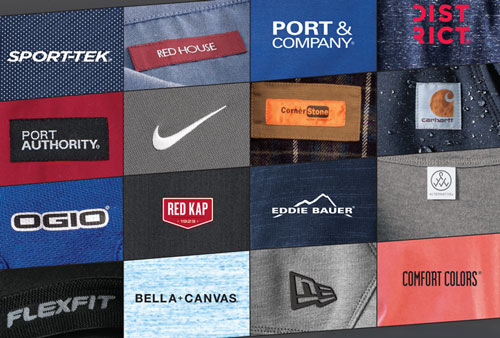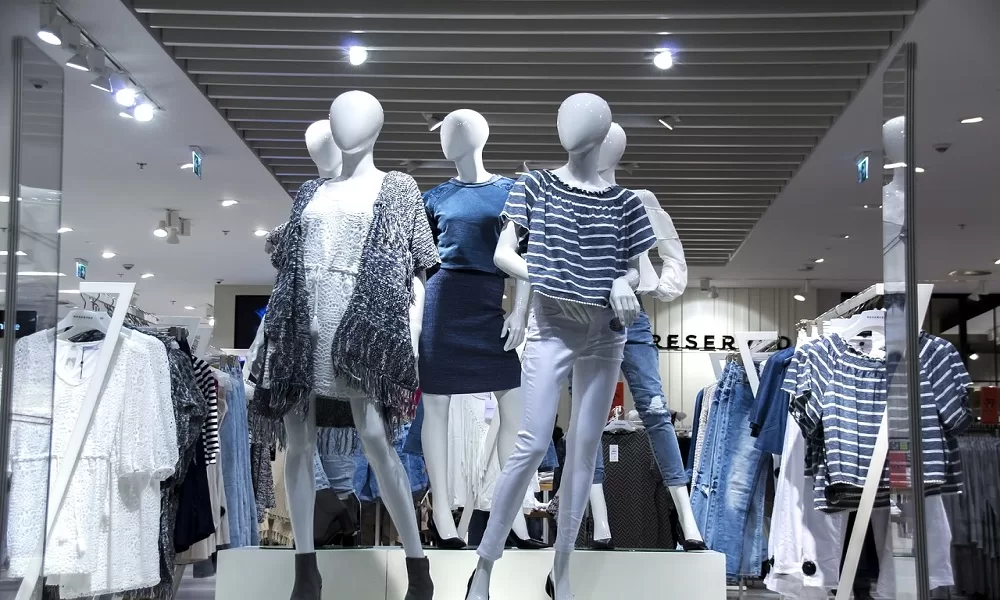Branded Clothing and the Rise of Recycled Fabric Use in Fashion
Branded Clothing and the Rise of Recycled Fabric Use in Fashion
Blog Article
The Value of Sustainable Clothes: Exactly How It Impacts the Atmosphere and Your Closet
Lasting apparel is significantly acknowledged for its important role in reducing the environmental influence of the rapid garment industry. By concentrating on green materials and moral manufacturing techniques, it attends to pressing environmental issues. This change not only profits the world however likewise influences consumer choices, resulting in a more thoughtful approach to closet monitoring. Recognizing these characteristics elevates crucial concerns about fashion's future and individual responsibility fit it.
The Ecological Footprint of Rapid Style

Benefits of Lasting Products
Sustainable products use considerable benefits, specifically via environmentally friendly fabric options that lessen environmental damage. These materials additionally show toughness and durability, lowering the need for regular substitutes. Because of this, they add to an extra lasting garment industry and promote accountable consumer behavior.
Eco-Friendly Fabric Selections
While the fashion industry has actually long been related to rapid patterns and ecological damage, the rise of green material choices presents a transformative possibility. Lasting materials such as natural cotton, hemp, and Tencel have actually acquired popularity because of their reduced environmental effect. These fabrics are commonly produced without hazardous pesticides and call for less water, minimizing their carbon footprint - Branded Clothing. Furthermore, many green fabrics are eco-friendly, contributing to a round economic climate by reducing waste. Picking lasting products not just sustains ecologically accountable practices however also promotes much healthier environments. As customers become more familiar with their acquiring power, the demand for green textiles encourages brand names to introduce and take on even more lasting production methods, inevitably benefiting the world and future generations
Toughness and Long Life Benefits
Numerous consumers are significantly recognizing the sturdiness and long life benefits of lasting materials in their garments options. Unlike traditional materials, sustainable materials such as organic cotton, hemp, and recycled polyester are crafted to hold up against damage, leading to garments that last longer. This minimized frequency of substitute not only saves customers cash over time but likewise lessens waste produced by fast fashion. Furthermore, sustainable clothing usually uses environmentally friendly manufacturing approaches that boost fabric toughness, adding to a reduction in the overall carbon footprint. By purchasing sturdy apparel, consumers can cultivate a more lasting wardrobe while delighting in high-quality items that keep their visual and performance with time. Resilience and longevity stand as vital benefits of selecting lasting materials.
Lowering Waste Through Sustainable Practices
Reducing waste in the style market can be achieved through cutting-edge practices such as upcycling and repurposing materials. In addition, embracing minimal closet approaches motivates customers to focus on quality over amount, ultimately lowering clothing intake. Together, these strategies add considerably to a much more sustainable garments version.
Upcycling and Repurposing Products
Upcycling and repurposing materials have actually become innovative strategies in the apparel industry, transforming discarded fabrics into beneficial new items. This method not only reduces waste yet likewise urges imagination and uniqueness in clothes design. By taking old garments and materials, designers can develop unique pieces that reflect personal design while reducing the need for new sources. Additionally, upcycling frequently needs much less energy and water contrasted to typical manufacturing procedures, considerably lowering the ecological footprint of style. As consumers end up being extra familiar with sustainability, the popularity of upcycled clothing remains to rise, advertising a circular economic situation. Eventually, these techniques add to an extra sustainable future, where fashion prioritizes ecological health and wellness over quick manufacturing and intake.

Minimal Closet Techniques
As people significantly seek to reduce their environmental influence, adopting minimalist wardrobe approaches has obtained grip as an efficient strategy to lasting fashion. These techniques highlight quality over amount, encouraging consumers to curate a smaller sized collection of functional, resilient clothing. By concentrating on classic pieces that can be blended and matched, individuals can minimize the frequency of purchases and ultimately lower waste.Additionally, minimalism advertises conscious consumption, urging consumers to review the ecological and honest ramifications of their options. This technique not only cultivates an extra lasting way of life but also simplifies day-to-day decision-making concerning clothes. As individuals embrace minimal principles, they add to a style culture that values sustainability and liable consumerism, eventually causing an extra eco-conscious culture.
The Role of Moral Labor in Sustainable Fashion
While many consumers are progressively familiar with the environmental consequences of their clothing selections, the value of ethical labor practices in lasting style can not be neglected. Moral labor includes reasonable earnings, safe working problems, and respect for employees' legal rights, creating the foundation of liable style production. Brand names that prioritize ethical labor not only boost communities but likewise set a standard for accountability in the industry.Moreover, the combination of moral practices cultivates transparency, allowing consumers to make educated options regarding their purchases. This method contrasts dramatically with quick style's exploitative labor designs, which frequently focus on earnings over individuals. By supporting firms committed to honest labor, consumers add to a system that values human dignity alongside ecological sustainability. Ethical labor is not merely an add-on; it is vital to the wider mission of sustainable fashion, making sure that the mission for eco-friendliness does not come at the cost of human legal rights.
The Impact of Lasting Clothing on Carbon Emissions
Sustainable garments has the potential to substantially decrease carbon exhausts connected with the fashion market. Conventional garment production contributes notably to greenhouse gas emissions, primarily because of energy-intensive manufacturing processes and using non-renewable sources. In contrast, lasting style concentrates on eco-friendly materials, such as natural cotton or recycled fibers, which usually need much less power to produce.Moreover, lasting brands often tend to adopt more reliable production techniques, lessening waste and decreasing total exhausts. By prioritizing longevity and ageless layout, lasting garments encourages customers to buy much less regularly, further reducing the carbon impact connected with overconsumption.Additionally, numerous lasting brand names are committed to openness in their supply chains, allowing customers to make educated choices that line up with their values. Inevitably, changing check my source in the direction of lasting garments can lead to a significant reduction in carbon discharges, contributing to a healthier world and a more sustainable future for the apparel industry.
Sustaining Local Economic Climates With Lasting Selections
The shift towards sustainable apparel not just addresses ecological problems but additionally substantially advantages local economic situations. By choosing sustainable fashion, consumers frequently support small companies and regional craftsmens, improving community strength. These business normally operate on a smaller sized scale, prioritizing workmanship and honest techniques over mass production.Investing in locally made lasting garments promotes task production and stimulates economic growth within areas. As customers become more familiar with the environmental influence of their purchases, they increasingly look for items that show their worths. This demand urges neighborhood suppliers to embrace lasting techniques, adding to a circular economy.Moreover, sustaining neighborhood organizations decreases transportation discharges, lining up with eco-conscious consumer behavior. The interconnectedness of sustainable clothing and neighborhood economic situations highlights the vital role that individual choices play in advertising both ecological and financial wellness. By promoting these regional links, neighborhoods can prosper while also functioning towards an extra sustainable future.
Changing Your Wardrobe: Tips for a Lasting Wardrobe
As people seek to minimize their environmental effect, transforming a closet right into a sustainable closet ends up being a crucial action. One efficient technique is to evaluate existing garments, keeping only products that are worn routinely which straighten with sustainability objectives. Prioritizing quality over quantity is crucial; purchasing long lasting pieces from green brands can significantly reduce waste.Additionally, including pre-owned items can take a breath new life into a closet while reducing ecological damage. Organizing clothes swaps with friends or contributing extra products can better advertise sustainability.When purchasing, people ought to look for products that are organic, recycled, or eco-friendly, and avoid quick style retailers - Branded Clothing. Lastly, exercising mindful consumption by thoughtfully taking into consideration each acquisition can add to a more sustainable lifestyle. By carrying out these pointers, one can develop a closet that reflects personal design while sustaining ecological stewardship
Regularly Asked Inquiries
Just How Can I Recognize Lasting Apparel Brands?
To identify lasting apparel brand names, one need to look into products utilized, look for accreditations like Fair Profession, and check out the brand's transparency about their production procedures, labor methods, and environmental effect, guaranteeing environmentally friendly and ethical methods are focused on.
What Are the Expenses Related To Lasting Style?
The costs associated with sustainable style can vary substantially. Higher manufacturing expenditures, ethical sourcing, and environmentally friendly materials often result in enhanced market prices, which may deter some customers while attracting eco conscious consumers.
Can Lasting Apparel Be Fashionable and trendy?
Lasting garments can certainly be fashionable and stylish. Developers significantly prioritize ingenious products and ethical manufacturing approaches, verifying that style and sustainability can coexist. Customers currently have diverse alternatives that blend visual appeals with environmental consciousness.
Just How Does Washing Garments Affect Their Sustainability?
Washing garments significantly impacts sustainability by consuming water and power, adding to contamination, and triggering microplastic release. Constant cleaning can deteriorate materials, reducing their life-span and enhancing the need for replacements, inevitably exacerbating environmental issues.
What Is the Life Expectancy of Lasting Clothing Compared to Quick Style?
The life-span of lasting clothes typically surpasses that of quick style useful link things, often long lasting a number of years because of high quality materials and craftsmanship. In comparison, quick style garments may break down rapidly, requiring even more constant substitutes. Sustainable garments is significantly recognized for its vital function in decreasing the ecological influence of the fast fashion industry. While numerous consumers are progressively conscious of the ecological effects of their apparel selections, the significance of ethical labor practices in sustainable fashion can not be neglected. Branded Clothing. Sustainable clothes has the prospective to greatly decrease carbon discharges associated check that with the style market. In contrast, sustainable style concentrates on eco-friendly products, such as organic cotton or recycled fibers, which usually call for less power to produce.Moreover, sustainable brands have a tendency to take on a lot more reliable manufacturing techniques, reducing waste and lowering overall discharges. By prioritizing durability and timeless style, lasting clothes urges customers to acquire less frequently, further decreasing the carbon impact connected with overconsumption.Additionally, many lasting brands are devoted to openness in their supply chains, enabling consumers to make enlightened choices that line up with their values
Report this page